Carnivorous Plants:
|
Classification
Phylogeny World Map Illustrations References |
| CP Book Library |
| CP Web Links |
PHOTO: Utricularia Pollinator
In a southern Oregon bog, a hoverfly
(not a bee) was
observed pollinating the flower of Utricularia macrorhiza.
July
2007.
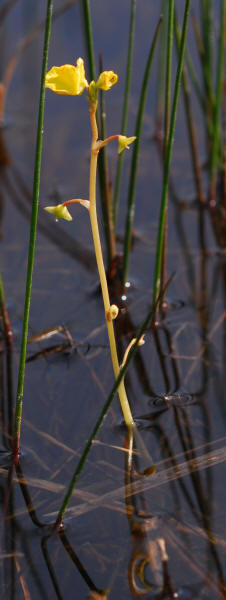
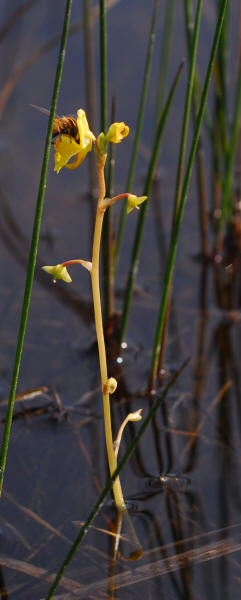
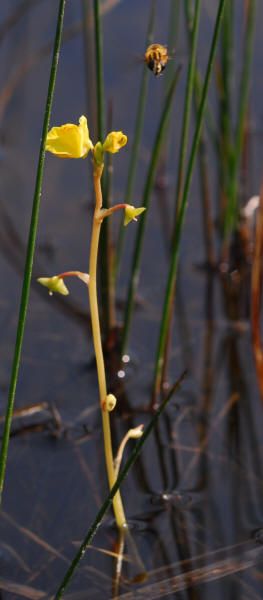
Initially, a bee seemed a bit too large for this flower, but, maybe not....
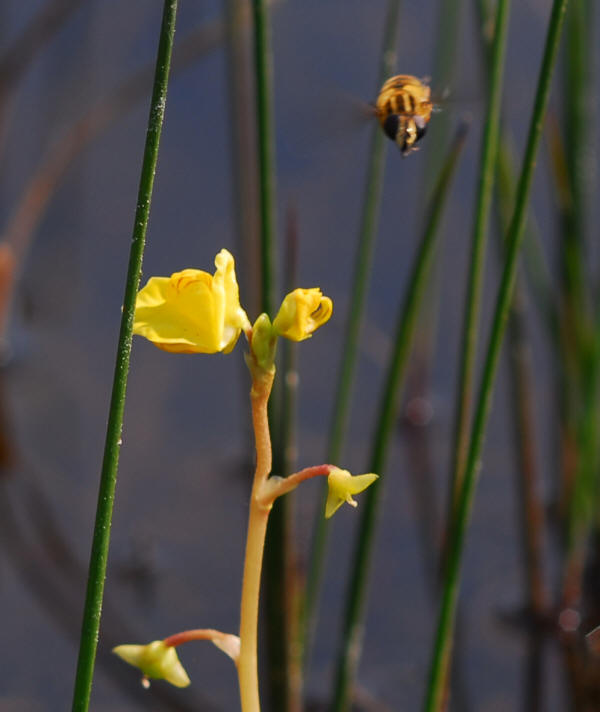
Notice the way the bee is forcing its
mouth into the opening between the upper and lower corolla lips,
trying to reach the spur, where the nectar is retained.
The forced opening of the lips is clearly seen in the
deformation of the corolla shape of the flower below,
compared with the
same flower before and after the pollinator visit.
I just noticed that this bee had a long, pointed nose!
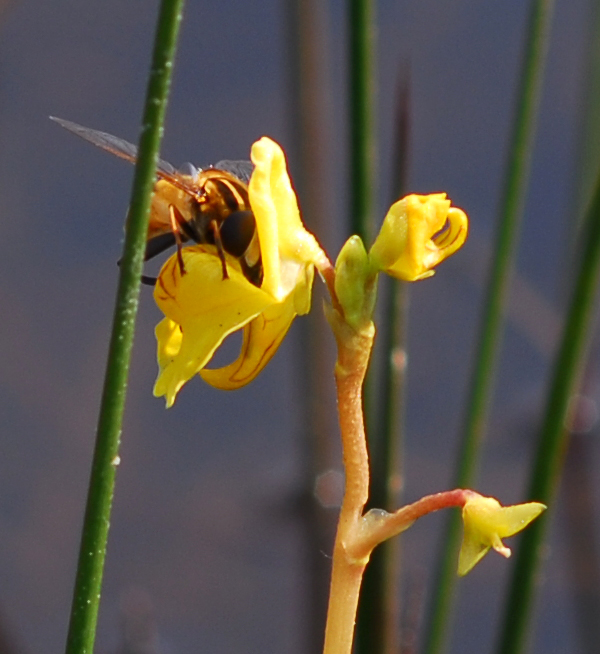
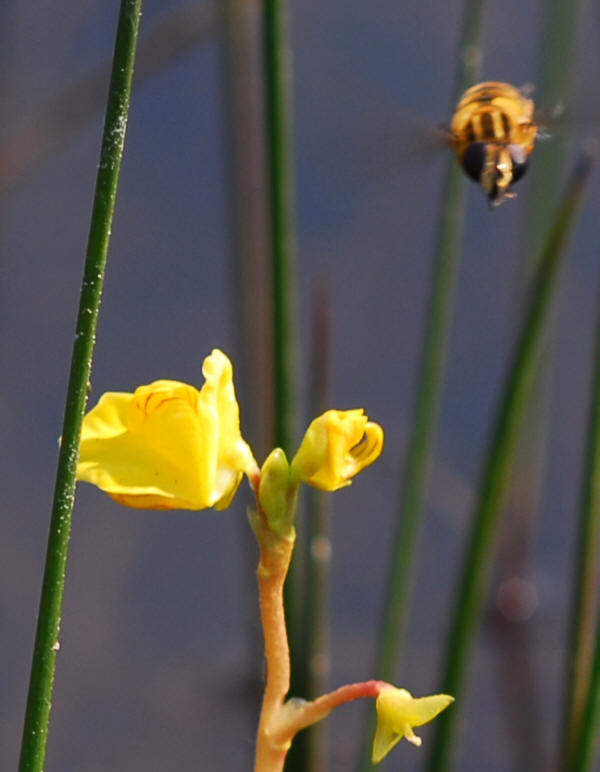
There aren't many articles on
Utricularia pollinators, but Salmon also reports sighting of a small
honey bee
on Utricularia gibba and Utricularia dichotoma in New Zealand.
See Carnivorous Plants of New Zealand by Bruce Salmon, Ecosphere
Publications, 2001.
Also, Pollination Biology of Mass Flowering Terrestrial Utricularia Species (Lentibulariaceae) in the Indian Western Chats by N. Hobbhahn, H.Kuchmeiser, S. Porembski, Plant Biol (Stuttg) 2006, 8: 791-804, describes the pollination biology of 3 terrestrial Utricularia species (U. albocaerulea, U. purpurascens, U. reticulata). They have found more than 50 species of bees, butterflies, moths, and other Diptera pollinating flowers.
| Carnivorous Plants Photography Web Site: Copyright © 2001-2018 Makoto Honda. All Rights Reserved. |